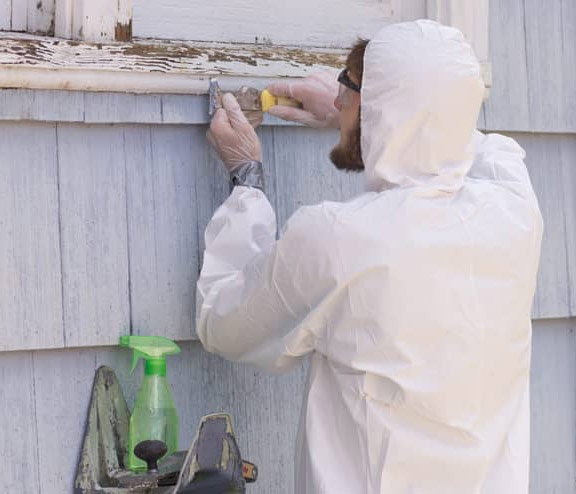Professional Lead Paint Removal Company-- Offering All NYC Boroughs
Professional Lead Paint Removal Company-- Offering All NYC Boroughs
Blog Article
Necessary Devices and Methods for Effective Lead Infraction Clean-up
Attending to lead offenses efficiently necessitates an extensive technique that mixes the right devices with tactical techniques. Concurrently, the usage of specialized cleanup devices, such as HEPA vacuum cleaners and lead-specific cleaning agents, is necessary for thorough pollutant elimination. Effective containment approaches, including plastic sheeting and negative air stress systems, are vital to stop the spread of unsafe products.
Personal Safety Tools
Personal safety tools (PPE) is a critical element in the efficient management of lead contamination cleaning. The crucial PPE for lead clean-up consists of respirators, protective clothing, gloves, and eye protection.
Respirators, specifically those outfitted with HEPA filters, are essential for filtering system airborne lead fragments, protecting against breathing. Safety garments, consisting of coveralls and non reusable matches, avoids lead dirt from sticking to employees' garments, decreasing the threat of secondary contamination.
Moreover, rigorous training on the right usage and maintenance of PPE is vital. Employees should be educated on wearing and doffing treatments to stay clear of contamination. Regular examinations and substitutes of PPE elements are essential to preserve their protective capabilities, ensuring a safe and certified cleaning operation.
Specialized Cleaning Devices

Another important device is the wet/dry vacuum, which can properly cleanse up both dust and liquid impurities. These vacuum cleaners often include HEPA filters to provide an added layer of safety. Damp wipes or tack fabrics are additionally essential for surface area cleansing; they are especially designed to catch and hold lead particles, decreasing the danger of spreading out contamination.
For more persistent down payments, specialized lead-removal cleansing agents are called for. These agents are developed to break down lead bits, making them much easier to get rid of. Scrub brushes with durable bristles can help in this process, specifically on harsh surface areas where lead dust often tends to adhere a lot more strongly.
Additionally, encapsulants are used to secure lead-contaminated surfaces, preventing the launch of lead dust. These specialized paints and coverings are developed to stick to different substratums, giving a lasting remedy for lead control.
Reliable Containment Techniques
Effective control methods are essential in mitigating the spread of lead contamination during cleanup activities. Applying robust containment methods makes sure that lead particles do not migrate to unaffected areas, thus protecting both workers and the setting (DOH & HPD Lead Violation Removal NYC).

To enhance control, encapsulants can be put on surfaces that are not being eliminated or disrupted. These specialized finishes bind lead dirt, lowering its availability for resuspension. Furthermore, all employees should wear proper Personal Protective Devices (PPE), including respirators and non reusable matches, to avoid contamination spread.
Safe Disposal Practices
Ensuring risk-free disposal practices is a crucial part in the management of lead contamination cleaning. Proper disposal minimizes the threat of lead returning to the atmosphere and endangering public health. The very first step is to determine and set apart lead-contaminated waste from other materials. Secure control using heavy-duty, watertight containers is necessary to avoid spillage throughout transportation.
Transferring lead waste calls for adherence to strict guidelines. Utilizing licensed contaminated materials service providers makes sure that the products are managed properly. Documentation, including manifests outlining the type and quantity of waste, should accompany deliveries to track the waste from the site of beginning to its final disposal location.
Designated contaminated materials disposal centers are equipped to handle lead-contaminated materials safely. These facilities usually utilize sophisticated approaches such as stabilization, solidification, or chemical treatment to counteract the lead before disposal. Landfilling in specialized, lined locations that avoid leachate from infecting groundwater is a common practice for final disposal.
Routine training for workers associated with lead garbage disposal is crucial to keep safety criteria and prevent unintended exposure. By sticking to these methods, companies can considerably minimize the environmental and health effects associated with lead contamination.
Regulatory Conformity Tips

Complying with regulative compliance is paramount in the effective execution of lead contamination cleaning. Recognizing and complying with government, state, and regional guidelines makes certain not just the safety and wellness of people however also the legal and economic health of the cleanup organization. The Epa (EPA) establishes rigorous standards, such as the Lead Restoration, Fixing, and Painting (RRP) Guideline, which mandates correct certification and training for service providers taking care of lead-based activities.
Conformity starts with an extensive evaluation of applicable regulations and laws. Organizations has to stay updated on any legislative adjustments, which can be assisted in with routine training sessions and subscribing to industry updates. Paperwork is click over here an additional crucial compliance facet; preserving comprehensive records of all tasks, including assessment records, worker training logs, and disposal manifests, is important.
Additionally, involving with accredited lead inspectors or risk assessors guarantees that lead hazards are properly recognized and reduced. Employers should implement the use of Personal Protective Equipment (PPE) and make sure that safety procedures are purely adhered to. Clear interaction with stakeholders, including employees, customers, and regulatory bodies, will foster a society of compliance and responsibility, inevitably adding to a safer and more reliable lead cleanup process.
Verdict
Effective lead infraction cleanup demands try this site the integration of specialized tools and critical methodologies to guarantee safety and security and effectiveness. Using HEPA vacuum cleaners, specialized cleansing agents, and effective containment methods such as plastic sheeting and negative air pressure systems is critical. Individual protective devices (PPE) safeguards workers from exposure, while safe disposal practices and rigorous adherence to regulatory compliance are vital for click here to read properly managing contaminated materials. Jointly, these procedures considerably minimize health and wellness threats and add to a cleaner setting.
Report this page